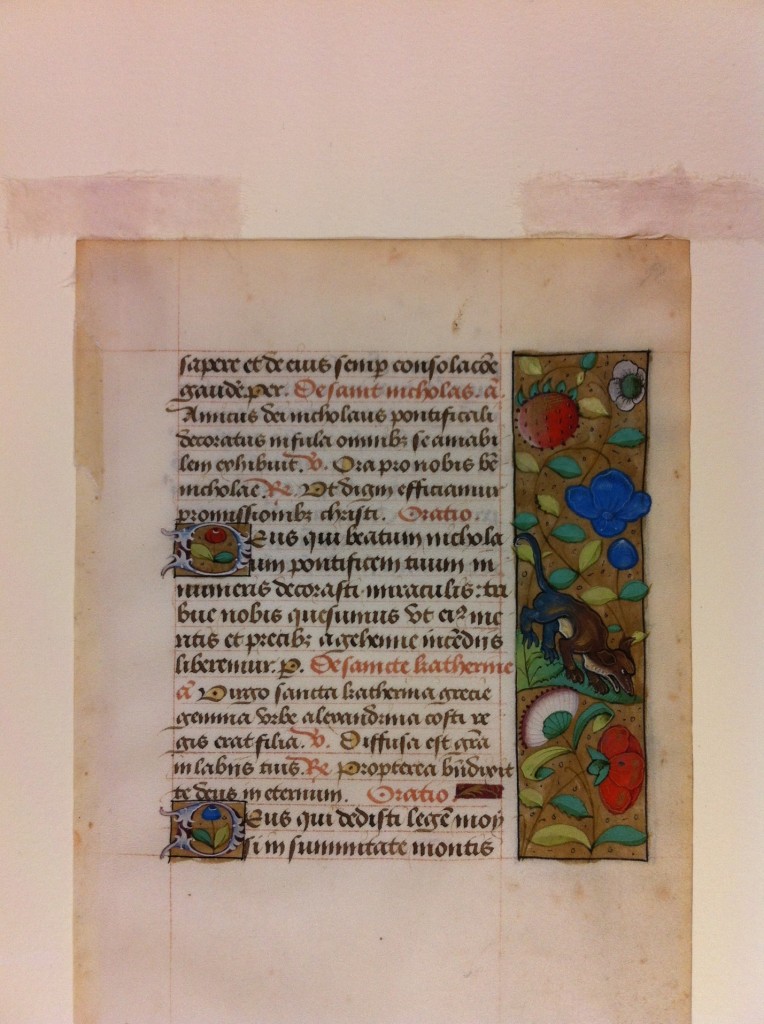Ethan Avery, a senior undergraduate student in history and political science, is a Student Library Assistant for Archives & Special Collections. Because of his academic concentration in (and general penchant for) the Early and High Middle Ages, Ethan took interest in the Medieval Fragments Collections. Below are his observations:
Stealing pages from medieval manuscripts has historically been a common practice due to value of even the individual pages. Most of these missing pages will fall into private collections or become lost after a short time. Fortunately, some of these pages return to archives, such as the pages that can be found in the Medieval Fragments Collection within Archives & Special Collections at the Thomas J. Dodd Research Center.
This collection was purchased in the early 1970s by the Special Collections division of the UConn library. It contains several pages from medieval manuscripts, showing beautiful calligraphy and artwork. These pages are primarily from the 15th century, but the earliest page was taken from a 13th century manuscript.
The purpose of the collection is to provide examples from the history of printing. These pages show the development of printing in France over the medieval period and are invaluable to the study of printing through the ages. But besides the aesthetic quality of the fragments, these pieces highlight the importance of collecting, preserving, and studying medieval manuscripts in the modern age. To view this fascinating collection, one simply has to visit Archives & Special Collections and request to use the Medieval Fragments Collection in the John P. McDonald Reading Room.

